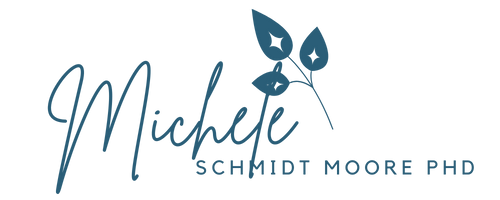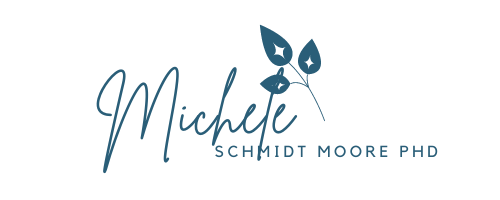44. Project You: It’s Design Day!
Subscribe to the Podcast:
Apple, Spotify, Google Podcasts
Welcome to season 3 of Design Lessons!
Season 3 is special because it is focused on you. It will give you the opportunity to focus on one specific area of your life that you would like to make just a little bit better.
Grab Your Project You 30 Day Planner and let’s get started.
Hey Designers,
Today is the day! We are creating our designs. We get to access many possibilities and choose the design that we are going to experiment with for the next 30 days.
If you are just joining us, we are in the middle of Project You. To get started, grab your free Project You 30 Day Action Planner, and start with episode 41.
Those of you who have been following along, did you leave a voice message about your project? Just leave your first name and what you are focusing on for your project. You can ask any questions you might have or just leave a message saying how much you are enjoying the process.
Go ahead, I’ll wait. Leave your message at https://www.speakpipe.com/DesignLessonsPodcast.
Your message serves a few purposes. First and foremost, it serves as an accountability tool for you. There is something about sharing with the world your intentions that helps you stick to them. It also lets me support you with your project, and you are doing your part to let fellow designers know that they are not working in isolation. We are a community, and we can support each other.
To recap we are using the LEADER framework which I adapted from the design thinking process. It helps us to adopt a reflective mindset about our lives. As we move through the process together over the next few weeks we will work on a mini life design that is going to make one aspect of our lives a little better.
So LEADER stands for Listen, have Empathy, Access your ideas, Design a solution, Experiment and Reflect. It allows you to become a leader in your life.
During the listening phase, we collected data about the highs and lows in our life. We paid attention. During the empathy phase, we sifted through that data and defined our driving question.
When we were together last time you chose the question that is driving your design. You either had a what-if question that you found in the Project You 30 Day Action Planner or you developed a personalized question based on the highs and lows you collected during the listening phase.
My question which was based on a level 10 day I had is How can I design my life so that I have a reflective and productive time in the morning for myself?
What’s your question?
The next phase of accessing our ideas is going to provide the building blocks for the design that we will test for the next 30 days. To access our ideas for a design solution for our questions, we are going to use the tried and true sticky note strategy. You will find a page with sticky notes in your Project You 30 Day Action Planner. I would recommend using actual sticky notes for this strategy or alternatively strips of paper. The joy of sticky notes is that they are small enough to just contain one idea per sticky note and they are moveable so that you can structure your design in different ways.
In the absence of sticky notes or strips of paper, you can create a web of ideas on the sticky note pages of the Project You 30 Day Action Planner.
For this strategy, you will set a timer for 3 minutes and generate as many ideas as you can, one per sticky note.
In my first round of sticky notes, I found that I really came up with ideas about the afternoon and evening time that may help to create the environment for a relaxing and productive morning. Some of the ideas on my sticky notes included a relaxing bath, reading a book at night instead of falling asleep to old Grey’s Anatomy reruns and packing my lunch before going to bed. But I still haven’t finished all of the possibilities. I haven’t had a chance to really think about the morning.
So if you are like me, 3 minutes will not be enough to get access to all of your ideas. You probably have a few more ideas that you can add. Set your timer for another 3 minutes and keep going. This is a traditional strategy in design thinking. When you think your well of ideas is dried up, push for 10 more.
Also, don’t be afraid to be outlandish.
This is the divergent thinking phase of this process and it’s probably one of my favorite parts. Right now you are living in the world of possibilities. Anything is possible. Silence your judge, and just put any and all ideas on the table. So set your timer for 3 minutes and then go for another round. Ready. Set. Go!
Now for the challenging part, bringing order to chaos….but remember it’s good chaos..its full of possibilities.
Take a look at what you have. Put those ideas that are alike together. You will start to see some patterns arise. Our brains are trained to see patterns.
As you create your design, you want to make it concrete, not just something that exists in your head. This is why your Project You 30 Day Action Planner has two places where you can map out your design.
You want to create a prototype of your solution. So for instance, for me to design my life so that I have time each morning to be reflective and productive in the morning, I really need to get my evening routine into order. So the prototype that I might create to represent my design is an evening checklist.
For me that would include the following:
Make my lunch for the next day
Prep my tea or coffee
Replace night tv with nighttime books
Set a reminder to whine down at 8:00
Lay out my workout and work clothes
Each of these tasks on this checklist allows me to reduce the number of routine tasks in the morning, so that I have the time in the morning for reflective and productive activities in the morning that I enjoy such as gratitude journaling, exercise, coaching wellness clients, and writing for this podcast.
There is a place in the planner for you to flesh out your design. There is also a place for you to state your focus for the next 30 days. On that page, create a snapshot of what your life looks and feels like right now before you put your design into action.
This is important. In order to see progress over the next 30 days, you need to know your starting point.
A few weeks ago, at the Connected School Communities Conference, I gave a presentation on Project You. In that session, we did a design sprint. So we went through LEAD steps in less than 45 minutes. Jason’s design was really interesting. He created an environment and space that was conducive to drawing more often and more consistently. So his design wasn’t necessarily about time, but about a place. He created the right mood for drawing as a way of enticing himself to practice something that he enjoyed, but didn’t make the time for.
So your design can take many forms. I invite you to be creative in this aspect.
We as a community really want to hear about your design. So you know what I’m going to say. If you can hear my voice, go to https://www.speakpipe.com/DesignLessonsPodcast and leave a voice message. You can share as much or as little information as you like. Leave your first name and your message. There is a space for your email address. It is optional, and I will only contact you to follow up or if I have a question. I’ll share a few of these with our community so we can all hear the breath of our designs. I think we will inspire each other too. And if you are thinking that no one wants to hear about your design. You are wrong. Remember you are important-full stop. Let’s hear your voice.
So now is the time to put your design into action. Next time we meet, I’ll share some strategies for how to get the best out of your design.
Until next time designers,
If you love the show, you can help support this work by sharing it with others or buying a coffee.
Connect with the Host
Dr. Michele Schmidt Moore on Instagram
Dr. Michele Schmidt Moore on Twitter
Dr. Michele Schmidt Moore on Facebook
Subscribe to the Podcast:



